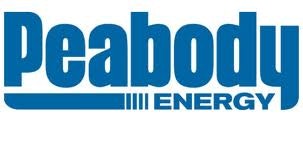Electric utilities are the primary consumers of thermal coal produced at U.S. mines. Coal’s battle with natural gas is about costs, not the environment. That’s why it still matters where you get your coal.
Two dollar gas
Electric utilities are highly regulated and keeping costs down is a vital part of remaining profitable. That’s why utilities started to switch to natural gas fired plants when gas prices dropped to historic lows.
There are efforts afoot to limit the use of coal, but the push is more about increasing the cost of using coal than about saying it can’t be used. So, coal will remain a viable fuel as long as it remains price competitive.
Gas is up
The price of gas has risen materially over the past year. In fact, Peabody Energy Corporation (NYSE:BTU) notes that the rise in natural gas led to a 14% decline in its use by utilities through the first four months of the year. Coal saw an 11% increase. This isn’t about the environment, it’s about costs.
When you look at coal from that perspective, some things change. There are several coal regions in The United States and the costs for pulling coal out of the ground vary in each area. For example, Northern Appalachia and the Illinois Basin have relatively low costs, Central Appalachia has relatively high costs.
Alliance Resource Partners, L.P. (NASDAQ:ARLP) recently highlighted this fact and its inevitable effect in an industry presentation. Central Appalachian production has been falling while the other two coal basins have seen increased production.
Well positioned
Alliance Resource Partners, L.P. (NASDAQ:ARLP) is happy to point these facts out because 95% of its coal production comes from Northern Appalachia and the Illinois Basin. That’s one reason why the company has been posting record top- and bottom-line results despite the weak coal market. The company’s goal is to gain market share by continuing to boost production of its low cost product.
It’s been able to do just that of late, which should result in another record year in 2013. It will also lead to more distribution hikes. Although Alliance Resource Partners, L.P. (NASDAQ:ARLP)’s around 6.4% dividend yield is low compared to its limited partner peers, the company is one of the best positioned domestic coal producers. In fact, the partnership believes its coal can compete with natural gas priced as low as $3.
A basin issue
Decreasing demand for Central Appalachia coal is a potential problem for Natural Resource Partners LP (NYSE:NRP). In 2012, almost half of the company’s coal and about 60% of its coal revenues came from that basin. That doesn’t mean that the partnership is destined to fail, but the added risk helps explain why it yields around 10.7%.
Management isn’t standing still. For starters, the company doesn’t actually mine any coal itself, it leases its coal lands out. That helps keep costs and operating risks low. Secondly, it has been broadening its natural resource focus for years.
In 2012, about 30% of the company’s revenues were derived from sources other than coal revenues. That includes a newly initiated push to own and lease out natural gas properties. The company also has major coal infrastructure investments, an aggregates business, and just took a stake in a soda ash venture.
Although the company’s reliance on Central Appalachian coal is a competitive disadvantage, the partnership’s toll taker model and increasingly diversified business make it a solid option in the coal arena.
In fact, despite the weak coal market, the partnership was able to increase its distribution in 2012. While it hasn’t upped the payout in six quarters, the fact that it also hasn’t cut the payment is a sign of strength in a weak industry.
Less central, but more risk
About a third of Rhino Resource Partners, L.P. (NYSE:RNO)’ direct 2012 coal production came from Central Appalachia mines. While that’s a lower number than Natural Resource Partners, Rhino is taking on the risks of operating its own mines. Rhino has also been diversifying its business, however.
For example, it has a large coal leasing businesses and has been particularly aggressive in its push into natural gas. So, even if its Central Appalachia coal is at a disadvantage, Rhino will benefit from increased use of natural gas.
On the surface, Rhino hasn’t handled the coal market’s rough patch as well as either of the two limited partnerships above. It cut its limited partnership distribution and stopped paying incentive distributions to its general partner (GP). While this can be looked at in a negative light, there’s a silver lining. The decision by the GP to stop taking incentive distributions was in support of growth projects.
That includes the push into natural gas and the development of a well-situated Illinois Basin property. Rhino is looking to start increasing distributions once that project is complete. The shares yield around 13.8%.
High risk high reward
Coal is unloved and facing serious threats. Eventually, however, the industry will recover. Alliance Resource Partners, L.P. (NASDAQ:ARLP) is among the best options in the space. However, Natural Resource Partners and Rhino Resource Partners are both growing businesses that are paying you to wait for a coal rebound while, at the same time, diversifying into stronger sectors.
Reuben Brewer has positions in Rhino Resource Partners and Natural Resource Partners. The Motley Fool recommends Alliance Resource Partners, L.P.
The article Coal, Costs, and Profits originally appeared on Fool.com and is written by Reuben Brewer.
Reuben is a member of The Motley Fool Blog Network — entries represent the personal opinion of the blogger and are not formally edited.
Copyright © 1995 – 2013 The Motley Fool, LLC. All rights reserved. The Motley Fool has a disclosure policy.





